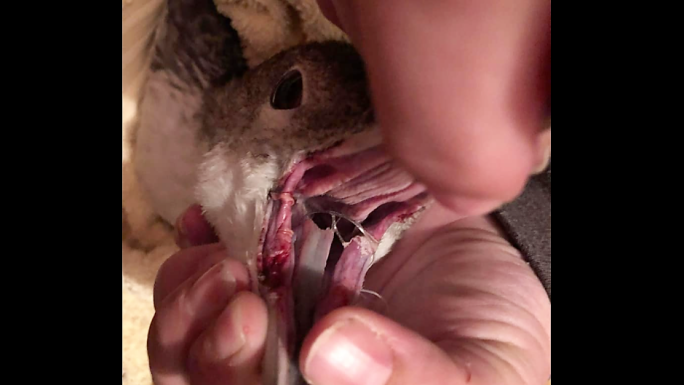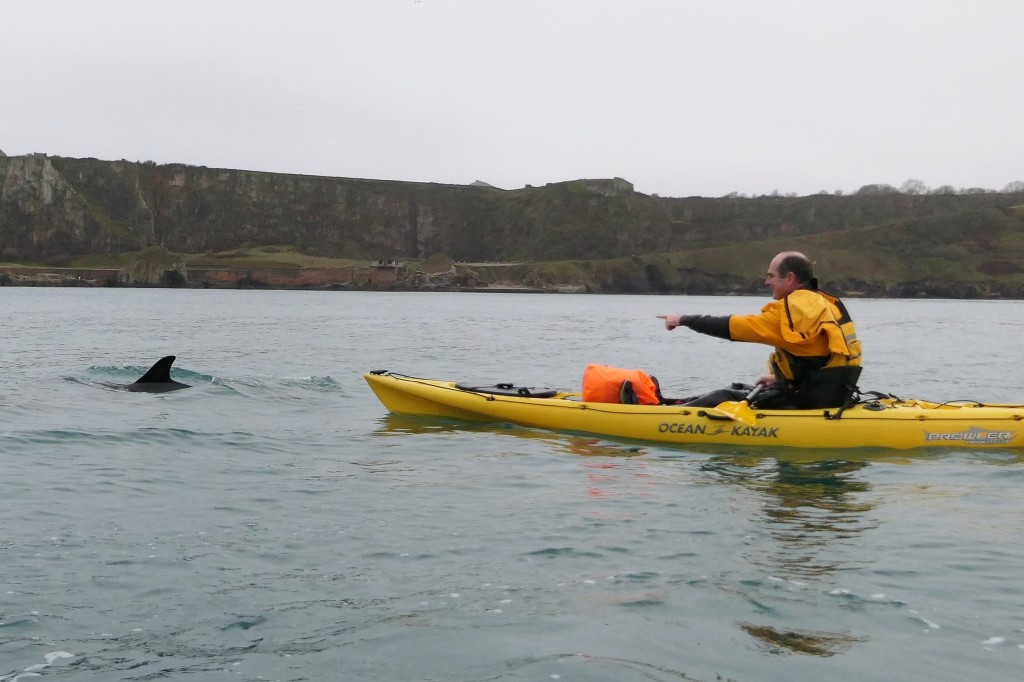
Will and I were on the water near Torquay at 0550 yesterday. Why so appallingly early?
For a multitude of reasons: there’s no other cars to jostle with in the car park, no queues for the ticket machine, the wind was due to pick up at 9am, it’s a lovely quiet time of the morning and most importantly the wildlife viewing is often best when the rest of the world is aslumber.
Oh, and Will had to get to work.
The wildlife sightings did indeed kick off in spectacular fashion. I heard the local gulls start making an appalling racket behind us just as we paddled out to sea. It took a while for my early-morning brain fog to defuzz and realise the gulls were probably anxious about a big raptor. My first glance skywards was worth the crunching of a few cervical vertebrae, because circling overhead was an Osprey!

It was lazily wheeling around being ineffectively mobbed by a Carrion Crow. En route to the north of England or Scotland, no doubt.
Superb. A spring Osprey is a rare sight. From the seat of my kayak, anyway.
It was a good omen for our next target, which was a very specific and very unusual one. Rob Hughes who runs Devon Sea Safari out of Teignmouth had kindly contacted me to tell me that there was a lone Risso’s dolphin which had been loitering about in essentially the same area for the last two days. It seemed to be busy munching its way through the local cuttlefish population.

As the Lone Kayaker is a particular fan of the mysterious and enigmatic Risso’s Dolphin, going to have a look was a no-brainer. Likewise Will…he was keen to experience one from the insubstantial platform of a kayak having seen a pod off the local headland a couple of years ago. They were being shadowed by some old bloke in a kayak…I wonder who that was?
Finding dolphins in a kayak is never easy as they can move an awful lot faster than we can paddle. Fortunately the sea was smooth which makes spotting those fins easier and we were aware that the dorsal fin of the Risso’s is the tallest of all dolphins so if it was around we had a good chance of eyeballing it.
Despondency was just beginning to kick in as we started our second lap of the local islands, but this time nosing a little further north in the swirling tidal current. Swirly, just like early, is always good for sea creatures.
Both Will and I gasped in harmony as we simultaneously saw that big fin break the surface a hundred metres ahead. Wow, what a beast! It looked so big.

It surfaced a few more times and then submerged with a bit of a splash as the tail flukes broke the surface.

So that was our entertainment sorted for the next two hours. We hardly paddled anywhere…just a bit of repositioning as the tidal current dragged us around. We didn’t need to paddle because the dolphin remained in the same area for the whole time. There was no point in paddling towards it because when it next surfaced it might be where you had just been sitting.
It dived for long periods…four or five minutes…and covered a lot of ground underwater. Occasionally it popped up only just within view, but usually it stayed close enough to have Will and I gaping with wonderment every time.
We never missed it when it reappeared after a dive even when it was behind us, because it had a very loud blow. This is one of the great benefits of watching from a kayak…not only do you have an uninterrupted view, you have uncluttered audio as well.
The blow of a breathing cetacean is, in my view, one of the great kayaking experiences and a Risso’s blow is particularly loud. This is maybe not surprising as they are approaching the size of a small whale…adults are 14ft long and weigh about five times as much as a Common Dolphin.
We watched its surfacing sequence of four or five breaths thirty or forty times. So it was statistically likely that on at least one occasion it would come up right beside my kayak. But it didn’t…it chose to come up right beside Will’s kayak instead…twice!

Risso’s are notoriously shy so it may have been deliberately avoiding us. It wouldn’t be the first time I have been given a wide berth by one of these exotic-looking creatures.

Rob Hughes arrived with a boatful of enthusiastic Devon Sea Safari clients and we all sat quietly and watched the dolphin busy feeding. Between breaths at the surface it constantly changed direction as if it was actually feeding on a cuttlefish at the time. Although we didn’t see any cuttlefish bits a seal was demolishing the remains of one unfortunate cephalopod and a posse of Great Black-backed Gulls, which have a particular taste for cuttlefish, prowled the sky.
I was so engrossed that I completely forgot about breakfast. It wasn’t just the Risso’s, it was the supporting cast of creatures that allowed no let up to contemplate a meal break.
Four Great Northern Divers flew overhead. All heading west and all in their spectacularly smart summer plumage featuring a diamond necklace. They will be en route to their breeding grounds in Iceland.
They are powerful birds but their wings look a bit unsubstantial to carry them all that way. And why on earth do they fly with their beaks open? All four which passed had their mouths gaping wide.

We were also befriended by an exceptionally cute Grey Seal pup who slithered about through the water in a typically effortless and balletic fashion. It also took a worryingly intense interest in the back of my kayak

At last the pangs of hunger could wait to be depanged no longer…

Unfortunately I hadn’t brought enough milk to float my 50/50 Muesli and Country Crisp (with freeze-dried Raspberries) combo in the manner of my liking so it was more akin to eating horse feed. However it did the job so no complaints.
What a tremendous morning with the star of the show undoubtedly the Risso’s.




































































































